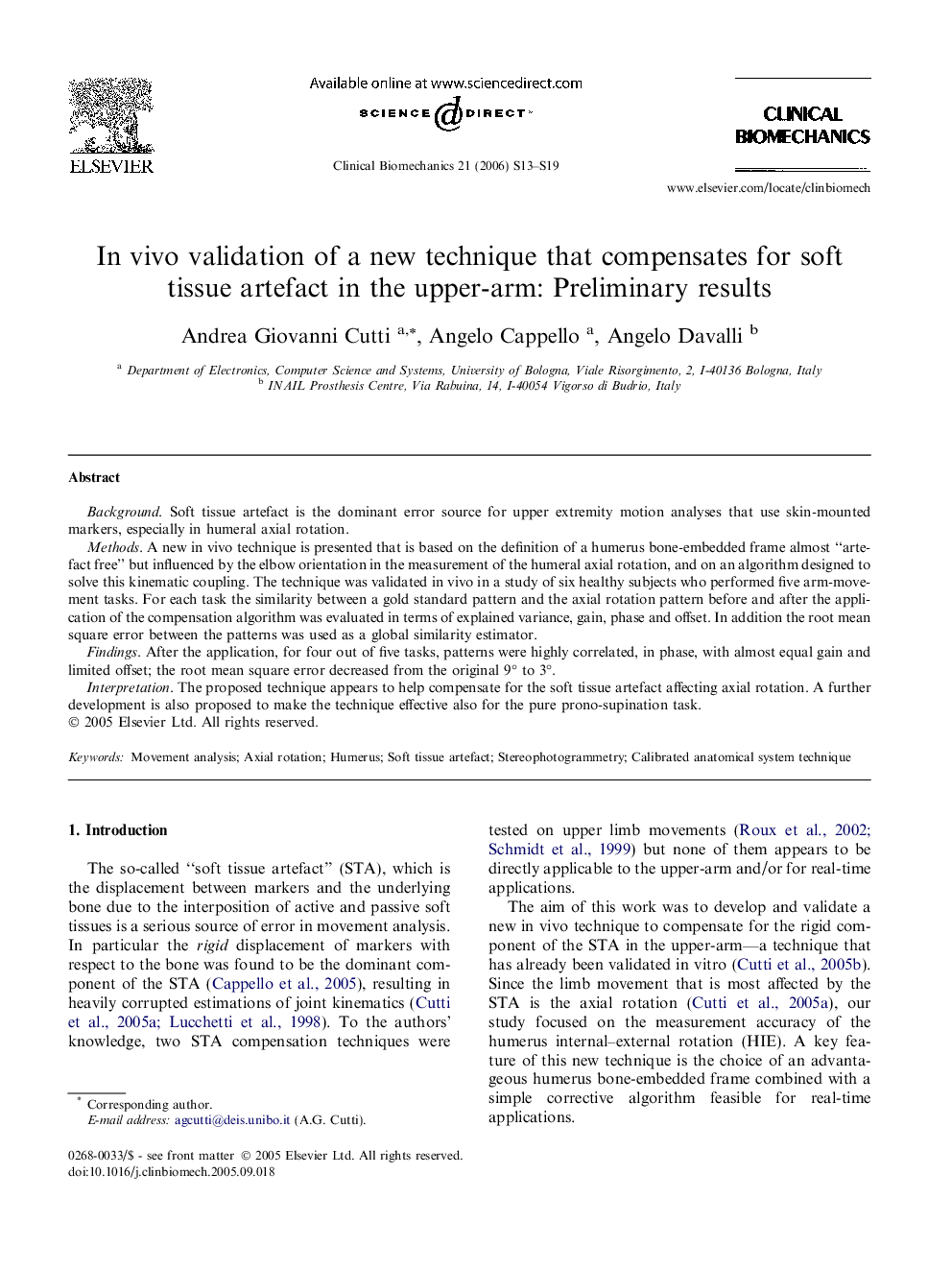| Article ID | Journal | Published Year | Pages | File Type |
|---|---|---|---|---|
| 4051616 | Clinical Biomechanics | 2006 | 7 Pages |
Background. Soft tissue artefact is the dominant error source for upper extremity motion analyses that use skin-mounted markers, especially in humeral axial rotation.Methods. A new in vivo technique is presented that is based on the definition of a humerus bone-embedded frame almost “artefact free” but influenced by the elbow orientation in the measurement of the humeral axial rotation, and on an algorithm designed to solve this kinematic coupling. The technique was validated in vivo in a study of six healthy subjects who performed five arm-movement tasks. For each task the similarity between a gold standard pattern and the axial rotation pattern before and after the application of the compensation algorithm was evaluated in terms of explained variance, gain, phase and offset. In addition the root mean square error between the patterns was used as a global similarity estimator.Findings. After the application, for four out of five tasks, patterns were highly correlated, in phase, with almost equal gain and limited offset; the root mean square error decreased from the original 9° to 3°.Interpretation. The proposed technique appears to help compensate for the soft tissue artefact affecting axial rotation. A further development is also proposed to make the technique effective also for the pure prono-supination task.
